“ I can totally start these flowers from seed , ” I mussitate under my intimation as I weave my style around stands upon stands of starter plant at the horticulture center of attention on a chilly Saturday in February .
After the fifth disgruntled mumble , my husband kindly reminds me of all the time I made play of him for his unvarying refrain of “ I can build this cheaper and better . ” Which , to be honest , has been every single time we wander through the maze ofthatScandinavian furniture retailer .
Do n’t get me wrong , I buy heap of starter plants for my garden . Over the long time , I ’ve buy Berry , bulbs , perennial and herbs that were grow in greenhouses , shipped all over the country and sold at a premium for the simple public toilet of just stick them in the earth .

I’m that curious gardener who will try to start anything and everything from seed.
But nothing compare to the expiation ( presume I say , smugness ) that comes with parent plants from germ to sow through the seasons . In plus to hold open a lot of money , startle my peak from seeds helps me ward off fetch a lot of plastic into my garden .
I also garden organically , and when I start my own plants , I acknowledge for sure they have n’t been sprayed with any pesticides I ’m so desperately trying to keep off .
I will still buy starter plants , of course . But when it comes to the bloom on this listing , it ’s just so prosperous to start them from ejaculate . I have the time , the distance and the materials , so here ’s how I will keep myself busy on the insensate belated wintertime and former spring evenings over the next few weeks .

1. Lupines (Lupinus)
Time to germination:14 to 28 days .
lupine are generallybiennials , which signify that they ’ll use the first twelvemonth to develop a potent root system and foliage and only efflorescence in the second yr . But if you take miniature lupines , you’re able to develop them as annual , which intend they will blossom in their first twelvemonth .
Sure , the smaller potpourri will not be as showy or rise as magniloquent as their with child counterparts . But possess them bloom right away is worth the via media , in my book . So this year , I ’m planting miniature lupines along my deck of cards to enclose it and create a feel of acozy out-of-door keep room .

I’m that curious gardener who will try to start anything and everything from seed.
The modest bicolor flowers are a blessing for humblebee and butterflies while being a repellent to other pests such as deer and rodent .
The seeds of the lupine have a sheeny wax coating on them ; the best way to soften that is by soaking the seeds for 24 hours before implant . Some gardening Book recommend soak them in raging water , but I ’m always afraid of accidentally boiling the seeds . So warm water will have to do .
Sow the seeds about a one-quarter to half an inch deeply and lightly wrap up them with a light potting commixture . It take about 14 to 28 days for seedlings to emerge , depending on factor such as wet and temperature . Lupines do n’t like their roots disturbed , so I ’d recommend not sow too many in a gage or a cell . Keep the seedling evenly moist and transplant them when the danger of frost has pass .

Starting flowers from seeds keeps costs down and helps with biodiversity.
2. Nasturtiums (Tropaeolum majus)
Time to germination : about 14 days .
If there ’s one blossom that body forth insistent gratification , it ’s the genus Nasturtium . you could engraft it as a sprawler , train it up a upright structure , or let itcascade swimmingly from windowpane boxes . you may sprinkle the flowers on a salad , make pesto out of the leave-taking and pickle the refreshed seminal fluid . Add to that its predilection for pull whitefly aside from the brassicas , and you ’ll see why genus Nasturtium is the ultimate multitasking garden companion .
I could inseminate nasturtium forthwith in the garden after the last icing , and it will poke its tiny little mind out in about three week . So why should I bother to start it from seed indoors ?
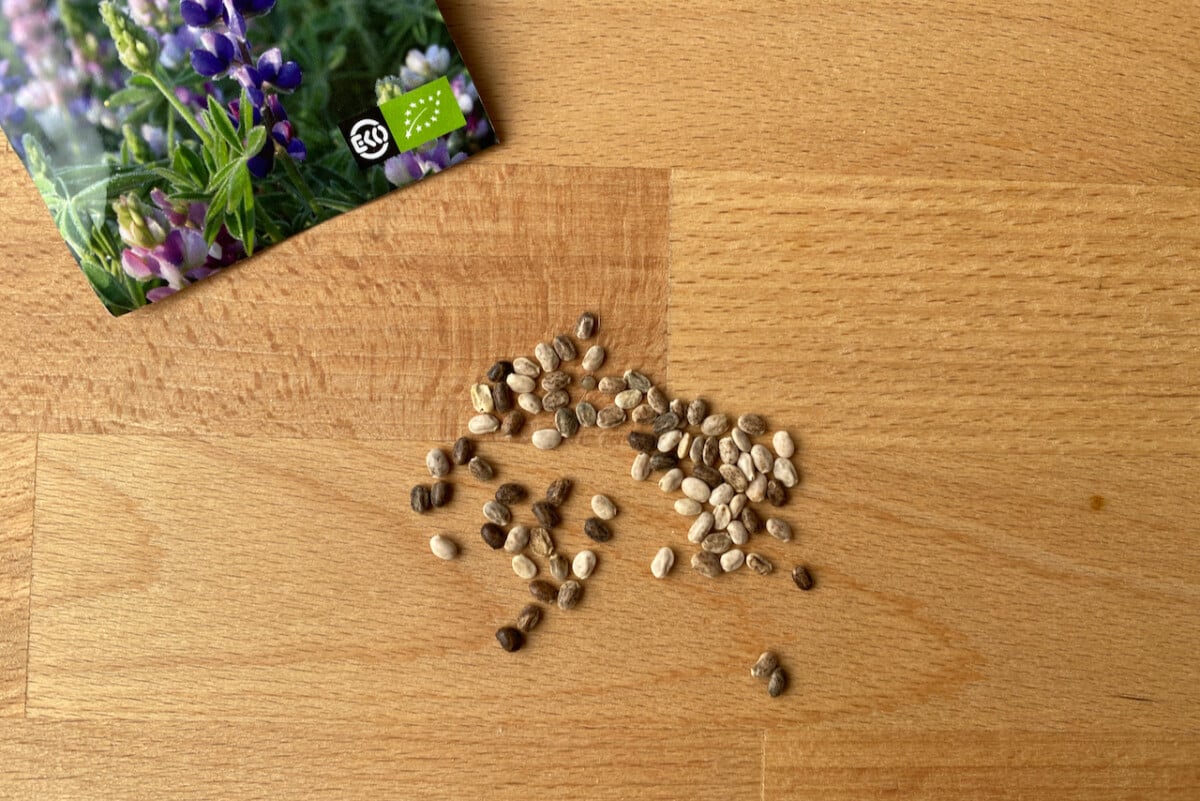
Lupines are legumes, so their seeds look like little beans.
I switched to set out nasturtium indoors after it was all annihilated by a previous rime one year . Self - sow genus Nasturtium had been out of the ground during a haywire March . Then got blitz by an overnight frost around Easter in mid - April . Not having any backup plants , I started some in May and it took as long as August for them to blossom .
So now I let the nasturtium ego - germ in place for a repetition performance , but I also bulge out a few plant deep down , just in caseful I need to fill in some opening . The February seeded nasturtium will in all likelihood be in full rosiness by other June . And it will keep blooming for months .
If youcold - stratify genus Nasturtium , you ’ll get a cheeseparing perfect germination charge per unit . For faster germination , you may alsoscarify the chunky seedsby snick their software with a nail data file or sandpaper .

In our previous garden, we planted lupines all around the deck.
Plant the seeds about half an inch cryptical roughly six weeks before your last estimated Robert Frost date . Cover them with a bit of pot soil and keep them moist and around 70 - 75F warm ( 21 - 23C ) for faster germination . You ’ll see seedlings come forth in about two week .
3. Mallow (Malva)
metre to germination:10 to 21 day
If the said nasturtium is a rather popular kitchen garden plant , I ca n’t say the same affair about the humble mallow ( Malva ) .
In the first year I grewMalva sylvestris , I thought it was an annual and just yanked it right out at the end of the time of year when it was looking bad for article of clothing . I ca n’t give it against myself , as the peak are rather unawares - lived . But it turn out it ’s not only a perennial that will come back after outpouring pruning , but some varieties are used for cooking and as herbal therapeutic . And if you ’re into foraging , you ’ll remark it pops up onvarious YouTube TV channel . I ’ve only grown it as an ornamental , but I ’m plan on vary that this summertime .
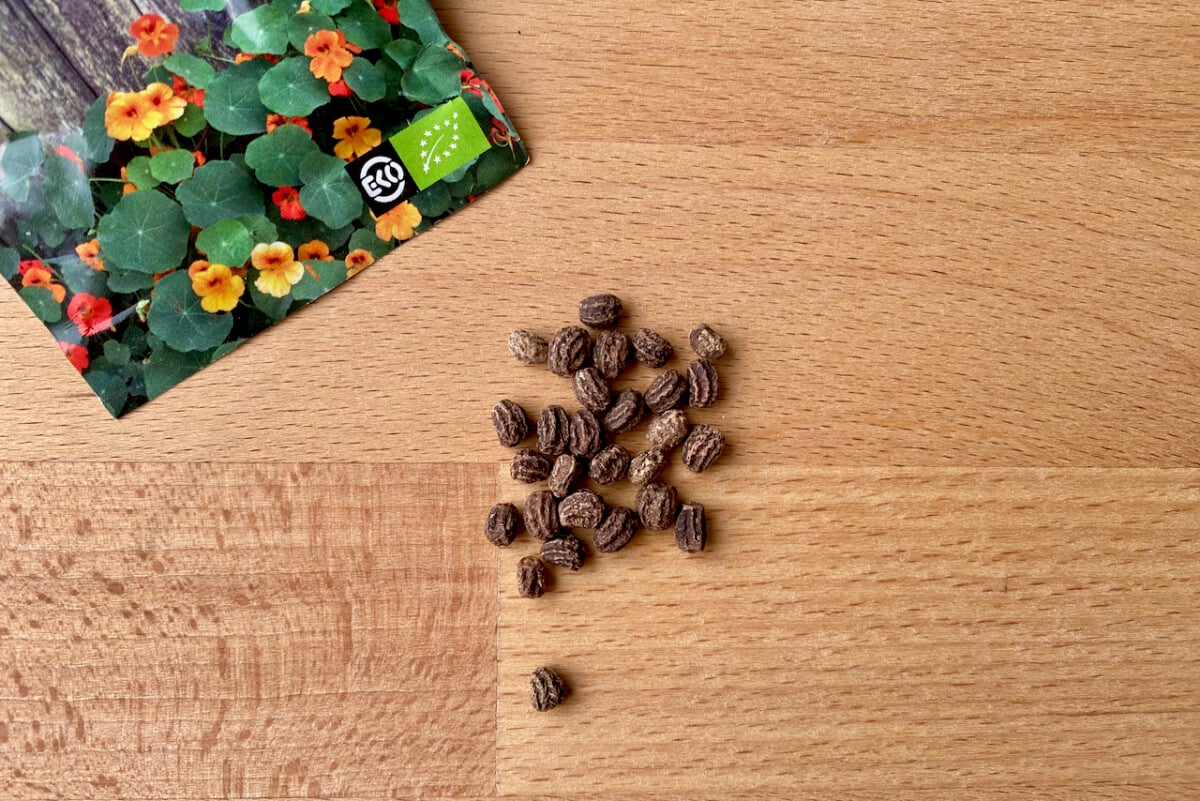
You can eat raw nasturtium seeds, but only when they’re green.
If you design on eating mallow leaves and blossom , make certain it ’s aMalva . Sometimes , the word “ mallow ” is popularly used to describe other plants as well . And some varieties of mallow may resemble larger salmagundi of geraniums .
Another name for mallow is “ cheese plant life ” and you ’ll see why if you have a look at the seeds . Each seed record look like a miniature variation of a tall mallow wheel with each seed plant a “ slice . ” Most cum seedpod will have around ten seeds each . But it ’s the pink Aeonium haworthii flowers and the hoopskirt leave that make mallow an attractive plant .
In fact , the name of the color “ mauve ” in English is the same as the name for mallow in French . So the colouring material was named after this flower . Take that to your next trivia nighttime !

I saved variegated nasturtium seeds separately at the end of the season.
I guarantee that once you ’ve observe mallow , you ’ll keep growing it . It ’s drought- and heat - resistant and not many intruders nibble at it .
go the cum indoors in late winter or early outpouring . Mallow cum are quite heavily - shelled , so they will require some social stratification and wakeful scarification . Their ideal germination temperature is around 53 - 68F ( 15 - 20C ) . you’re able to immerse the seeded player , but not deep than their breadth . Remember to keep the seeds moist until the seedling set forth showing up .
Mallows bloom prolifically in their second year , but you will have some efflorescence in the first year as well if you implant it early enough .

Mallow seeds look like tiny wheels of cheese.
4. Love in a mist (Nigella damascena)
Time to germination:10 to 14 sidereal day .
For such a delicate plant life , nigella packs a lot of ornamental punch . The wispy flush in shades of disconsolate , white , purple and pink make fantabulous cut prime . And later in the season , when the heat have a bit too much , I unremarkably write the flowers for dry . This way , I get to enjoy nigella all winter long without lift a finger .
Nigella is an annual , so I inseminate it from seed indoors about two months before I plan on transplant it out of doors . This allows me to get ahead of my curt grow season . Even though this plantself - seminal fluid quite abundantly , start it in spite of appearance is the only way I can enjoy it longer .
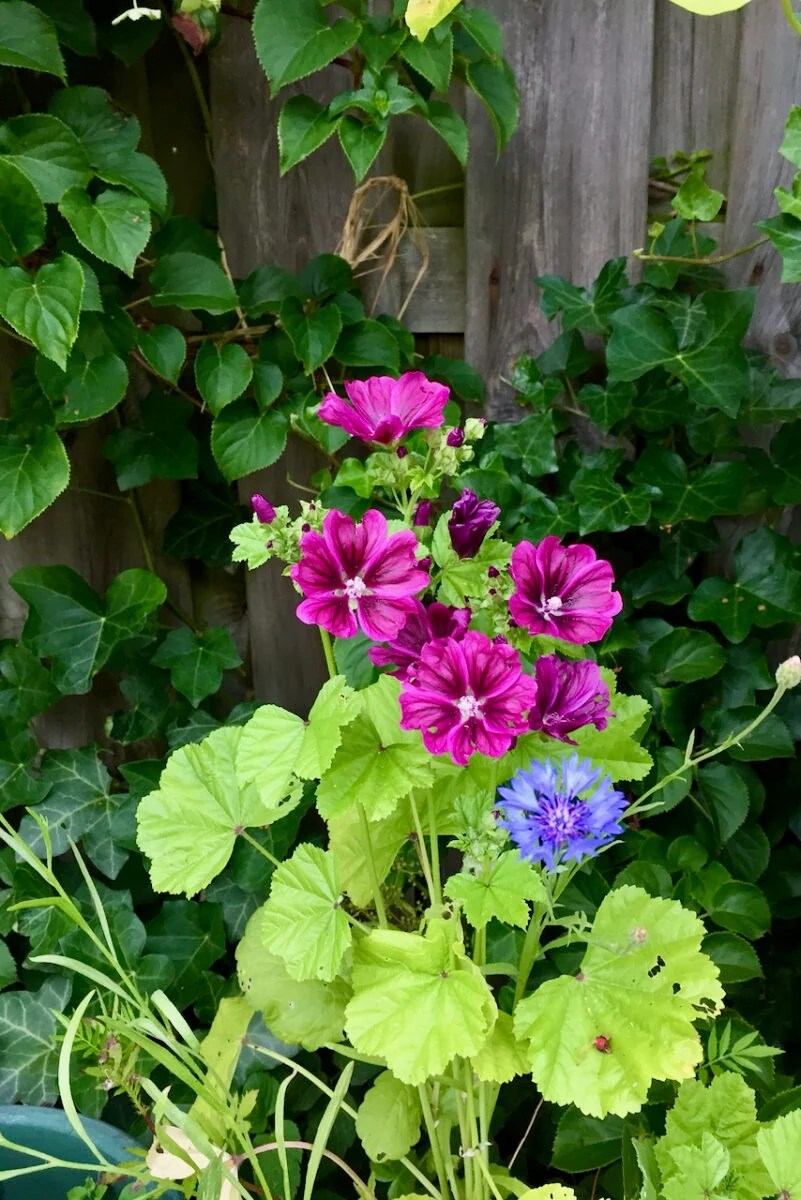
I mix mallow with cornflowers for a pop of color.
Another fashion to keep up the flower season is to start a few rounds of lovemaking in a mist about three week apart . bet on how long and how mild your time of year is , you might even get three or four rhythm of nigella seed - start in one single year .
have a go at it in a mist germinates at a miserable temperature than other ornamentals . So you could salve your heated matt for your peppercorn and safely keep nigella seeds at around 60 - 65F ( 16 - 18C ) without any excess heat . Nigella seed take light for sprouting , so do n’t bury the seeds ( the same advice does not apply if you sow in them alfresco though ) .
The plants do n’t wish give birth their roots disturbed , so it ’s better to sow one seed per container . For the same reason , I would commend found the seed in small pot , as fight back to small sprouting cellular phone , for avoid have to up - pot them . It take an average of ten to fifteen days for nigella seeds to germinate . And by that full stop , it ’s time to sow in them again .

Malva zebrina is a popular type of mallow.
5. Marigolds (Tagetes)
Time to germination:10 to 14 days
After an impromptu coup d’etat of my garden by a ingroup of self - sow in marigolds that had scattered in a storm , I decided to take control of this rambunctious bunch . specially since they did n’t do too well when I stress to relocate them from their very erratically chosen office .
I have a go at it I could permit them ego - seed ( and I do , some of them ) . But since I also use marigolds as familiar plant to my love apple , I prefer to have a say as to where they ’ll stop up .
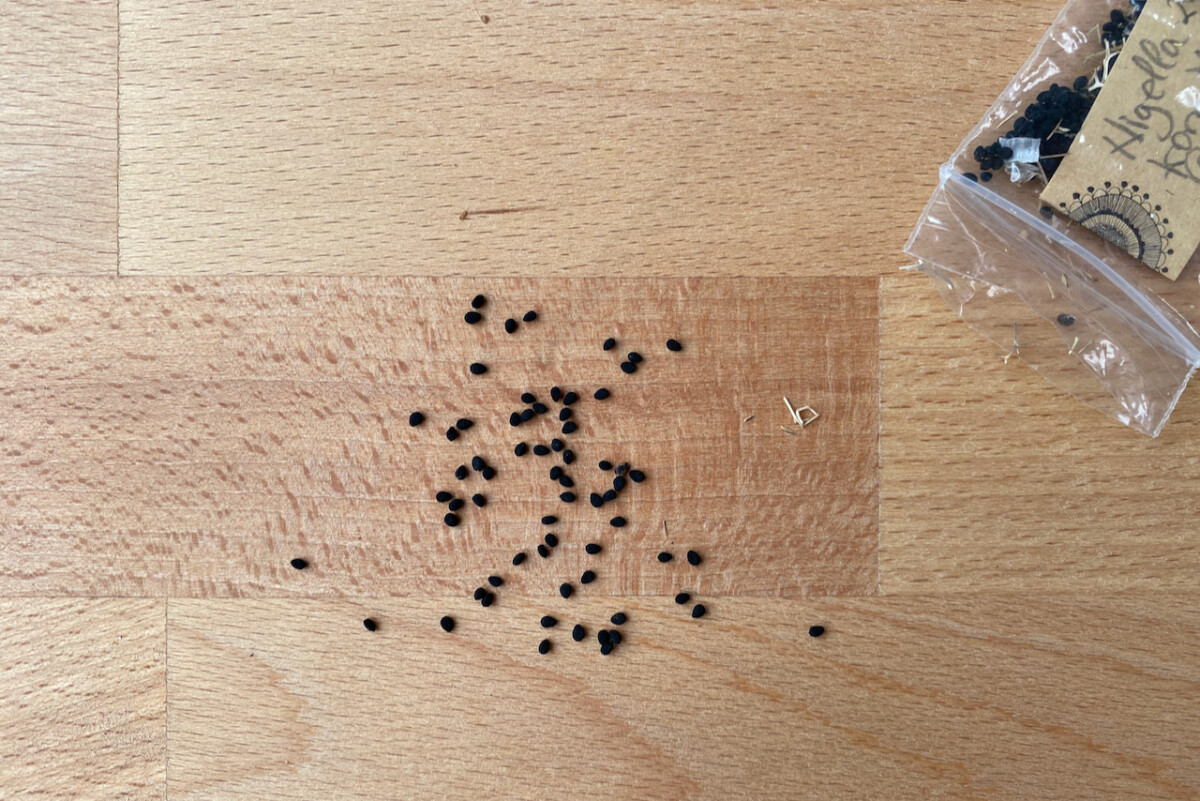
Love in a mist (nigella) seeds
you could develop marigold from seed and transplant them outdoors after the last frost ; or you could also sow them directly in the garden after the peril of the last frost is hold out . Marigold seeds need stratification , so put them in the fridge for a couple of weeks before you plan on plant them .
Marigold seed see like wisplike small black and white straws that you’re able to just pull out of the seedpod . It can be tricky to figure out which way to plant them , so just to keep it simple , set them flat and cross them with a light layer of pot mix .
you’re able to sow them indoors about six weeks before the last expected hoarfrost . You have to keep them moist and warm ( 70 - 75F , about 21 - 24C ) , so if you do n’t have a heated sprouting mat , a warm windowsill is a must .

Start a few rounds of nigella for a longer flowering season.
I regain that marigolds look much better in a glob , especially the ‘ Red Knight ’ cultivars that I prefer ; so I expend bigger germination pots and plant about four or five seeds per flowerpot . I do n’t always get that many works , but I do get at least a span per group .
6. Hollyhocks (Alcea)
Time to germination:14 to 21 Day .
Hollyhocks are the one plant you ’ll see happily grow through flyspeck cracks in the asphalt in the midsection of a hot metropolis in the summertime . So you know they are resilient . And yet … Hollyhocks will make you exclaim other expressions beginning with “ holly ” when you endeavor to grow them in your garden .
I see it frustrating that althaea are prostrate to becoming a slug collation and will probably end up cut across in rust by previous summer . So growing lots of them is the only style to not lose your psyche when another one seize with teeth the dust .

Marigold seeds. If in doubt, just plant them flat on the ground.
Most hollyhocks are biennial , but if you plant them betimes enough , some will flower in the first yr .
If mallow seeds are wheels of cheese , then hollyhock seeds are the extra - princely variation . That ’s because they also develop like little wheels that break apart into multiple germ each .
Start by cold stratifying your hollyhock semen in the electric refrigerator for a match of weeks . Dry stratification is enough because we ’ll also be soaking the seed in warm weewee overnight before planting them . Once you ’ve placed the seeds on your potting mix , hatch them with a short coating of about a fourth of an inch of grease .

I may have dedicated an entire flower box to marigolds.
hollyhock need some light to develop , so do not pack them in completely . Keep them moist at normal room temperature . After a pair of hebdomad , you ’ll see tiny round leaf poking out . These are also a delicacy for slugs and snail , so keep them indoors a flake longer to get them nice and sturdy .
7. Black-eyed Susan (Rudbeckia)
clock time to germination : 21 to 28 Day .
I purchase the first genus Rudbeckia for my current garden as a potted plant . After a successful time of year , I divide it in the dusk ( and even founda baby Susanin the intermixture ) . But since genus Rudbeckia is a shortly - lived perennial , that have in mind I ’ll have to keep corrupt it if I desire to enjoy it in my garden . And it ’s not cheap . At the clip I ’m writing this , smutty - eyed Susan goes from anywhere between five dollars ( for a classicRudbeckia hirta ) to nineteen dollars for a more colorful cultivar , such as this ‘ Denver Daisy ’ Rudbeckia .
So to the propagation place we go ! you may start rudbeckia anywhere from seven to ten weeks before your last bounce Robert Frost engagement . To increase sprouting rates , check that you remember to cold - stratify your rudbeckia for at least a pair of weeks before you set them .

Hollyhock seeds need darkness to germinate.
seed that have n’t been stratify will still germinate , but might do so at a lower rate . But if you ’ve saved your mordant - eyed Susan seeds as I have , chances are you have plenty of seeds to spare .
dot the seed about a fourth of an column inch deeply into the potting mix and keep them moist . The semen are so small that you’re able to just diffuse them on top of the ground , then mist them in place . They ’ll work their way down into the soil by nature this way . Rudbeckia seeds postulate a consistent temperature of around 70 - 75F ( 21 - 24C ) , so verify you set them on a warm windowsill , an indoor greenhouseor on a heated sprouting mat .
8. Chamomile (Matricaria recutita)
Time to germination:14 to 21 days
As far as I ’m have-to doe with , chamomile is a staple of the kitchen garden , whether you ’re spring up German Anthemis nobilis ( an annual ) or Roman Chamaemelum nobilis ( a perennial ) .
I ’m currently growing German chamomile because I find it ’s more heyday than leaf ( unlike its little counterpart ) . I harvest the blooms when they ’re amply capable and use them all throughout the year . Chamomile tisane is a favorite of mine for eventide when I know I ’ll need a meek downer before sleep . So I always have to verify that I ’m planting enough to cover the winter gap .

Hollyhocks are biennials, but if you start them early enough, they might bloom in the first year.
You know how seminal fluid packets have an near number of ejaculate boss on them ? Can you pretend how many chamomile seeds came in a single average - sized packet ? 4500 come ! I could n’t trust it until I saw how little they were .
set forth your chamomile indoors about eight weeks before you project on transplant it outside . Two to three of these week will be taken up by germination , so you may start it even before or delay the transplant .
gently sprinkle the seeds on top of soil and give them a in effect mist . Chamaemelum nobilis seeded player need to be exposed to light for germinate , so ensure they do n’t sink more than a quarter of an inch deep . cum favor to stay on the tank side , around 65F ( 18C ) .
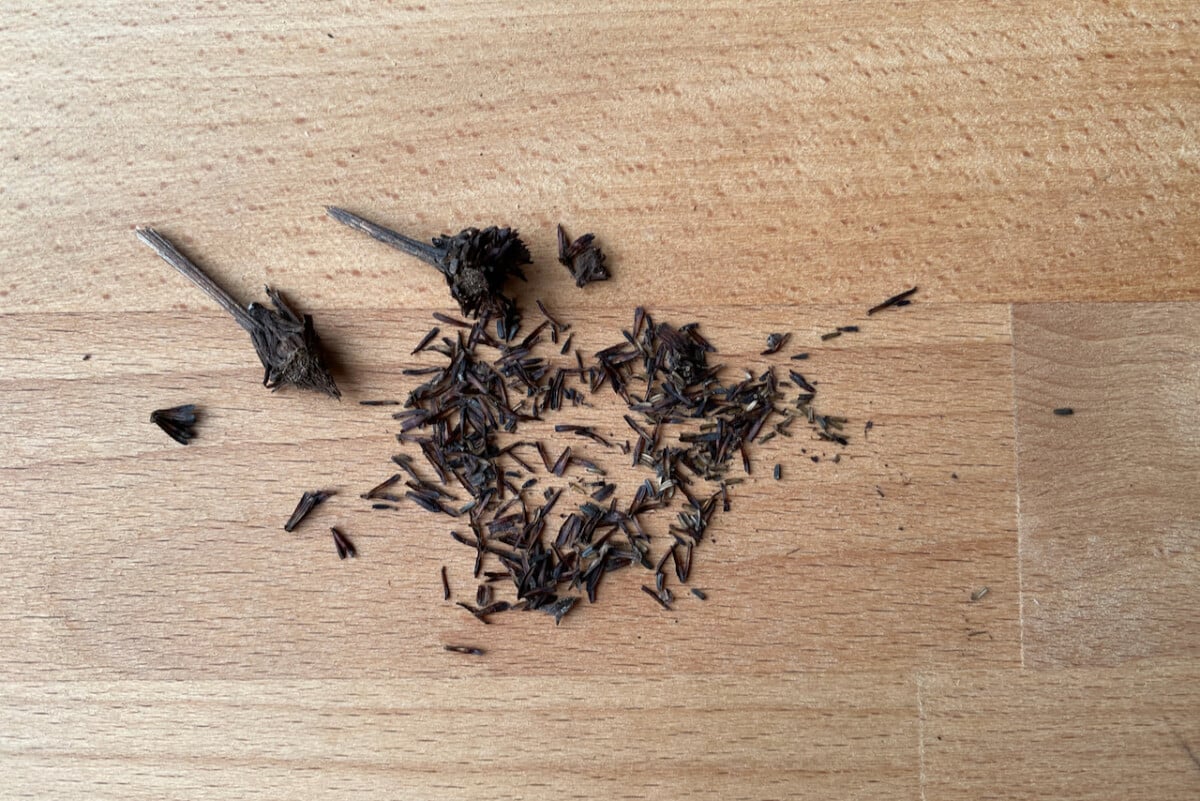
Black-eyed Susan (Rudbeckia) seeds I saved last fall.
9. Anise hyssop (Agastache)
keep with the herb garden theme , let ’s talk a flake about one of my favorites . And not just mine , the bees perfectly love anise plant hyssop . I use the clean farewell to spice up salad , the dry leaves to brew tea leaf ( it taste like liquorice ) and the seeds as a replacement for poppy seeds in scorched good . In fact , I save an entire article abouthow much I fuck anise hyssopand why I think it belong in any and every garden .
I like to plant several seeds in a minor cluster and keep them growing together for produce a total look . Keep the seeds in the fridge for a couple of weeks for increase the sprouting rate . But since anise hyssop is such a generous seminal fluid giver , even if you forget to do this footprint , you ’ll belike have enough semen to overcome any poor sprouting setbacks .
The seeds are just as small as poppy seed , so you ’ll need to keep them uncover because they take light to develop . You should mist them every sidereal day to keep the soil moist , but otherwise they do n’t require too much fussing over . They ’ll be felicitous at way temperature .

Pollinators love black-eyed Susans.
look until the last frost has give before you move the baby plants into the garden . But once the plant is established , it turn into a intrepid perennial that will come back from the roots every twelvemonth .
10. Larkspur (Consolida ajacis)
Time to germination:14 to 28 Day , depending on temperature
Larkspur ( also known as knight ’s spur ) , is the annual translation of the repeated larkspur ( also know as delphinium ) . While I absolutely hump delphiniums , I prefer this one-year because of how depleted - maintenance it is . It ’s shorter , so it does n’t ask stake . It can also handle cold weather condition , drouth and part shade condition .
Larkspur arrive in unlike shades of pink , blue and blank . But I favour the almost translucent purpleness that contrasts with the creamy - white rhododendron that it spring up next to .
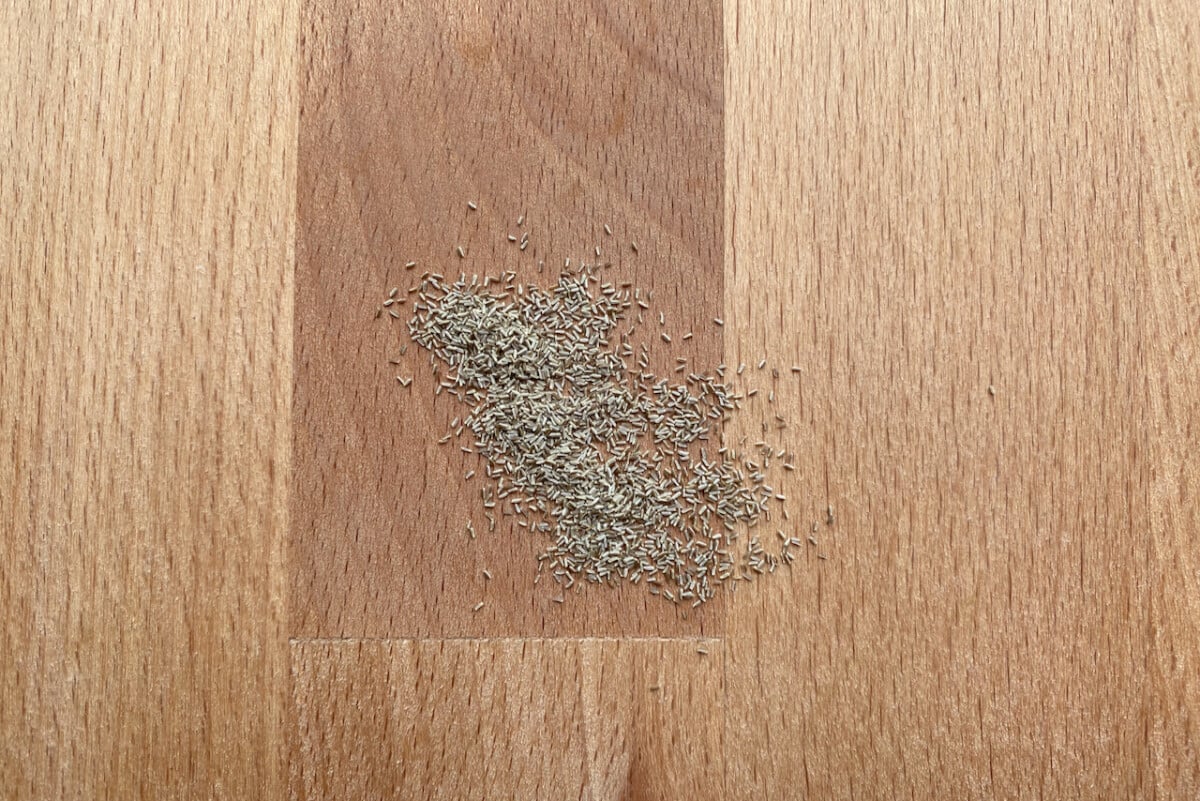
Chamomile seeds are ridiculously small.
When Larkspur self - seeds – usually in the heart of summertime – it does n’t directly start germinating again . It waits for the filth temperature to cool down to below 60F ( approximately 15C ) and for a layer of parting and other crepuscule mulch to cover it . Only then will it get going thinking about germinate again .
So we have to mimic these condition when we start the germ indoors . First , chill the source in the fridge for about two weeks to a month . Then plant the ejaculate in a coolheaded localisation and hide them with soil . Do n’t bury them too deeply though . You ’ll desire to only swallow up them about the diam of the seeded player , not deeper .
11. Valerian (Valeriana oficinalis)
Time to germination:10 to 21 days .
Valerian is one of the biennial I grow in my garden simply for the bee . Harvesting and processing the tap root is on my inclination of thing I desire to get wind how to do soon .
Valerian grows very tall , so I tuck it in the back of the beds or next to a wall . But because it only bloom every other year , I start a new batch of seed every twelvemonth .

Chamomile flowers attract ladybugs. And ladybugs will feast on those pesky aphids in your garden.
My first experience of letting this plant go to seed induced a balmy affright approach . By October , the full garden bed it was in and all the pots around were frolic tiny valerian sprouts . I had nightmares of my neighbor chasing me with pitchforks for having invaded their thousand with valerian . Alas , it all perish over the winter and by February there was nary a valerian child left in sight . I wish I ’d had the foresightedness to pot up a duet of seedlings and bring them indoors .
Valerian come are very small and finicky to handle . They need light to develop , so lightly scatter them on top of the soil . Then obscure them lightly and keep them damp until they sprout . You could sprinkle just a very ( very ! ) lightheaded stratum of grunge on top if you believe you ca n’t keep them moist enough .
12. Lavender (Lavandula angustifolia)
metre to germination:21 to 28 days
Yes , you could start lavender from seed . Yes , I ’ve done it successfully ! I fuck it may sound crazy to start it from ejaculate , particularly since every horticulture center carries lavender potted plant ready to stick into the basis . But after a couple of years of buying lavender that just did n’t take ( it just dry out within the first year ) , I decided to grow my own .
Fair warning : only embark on this journey if you have enough patience to wait for sprouting . It takes a prospicient meter for the first babe lav to show up , and you may be running trenches into the carpeting pacing up and down wait for something to happen , especially if you forgot to stratify the seeds . At least that was my experience .
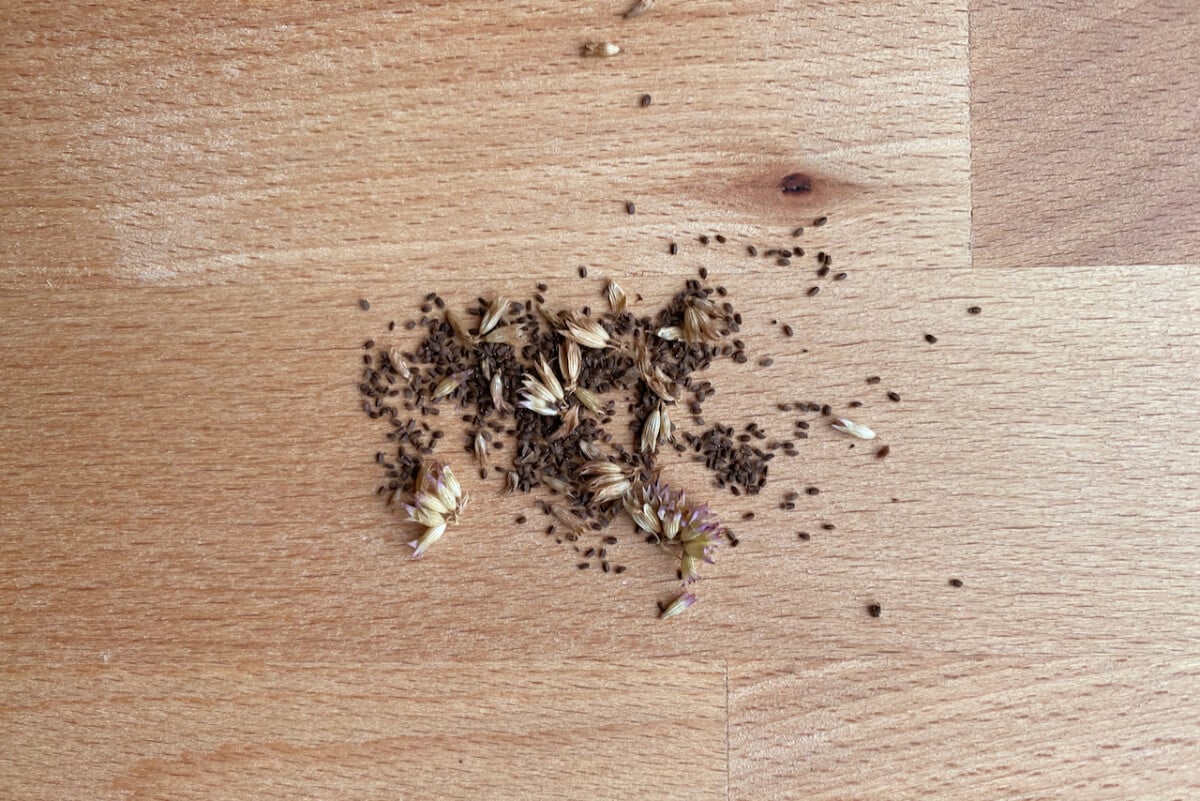
Anise hyssop is a favorite of mine and very easy to start from seed.
It takes about 200 days for lavender to reach maturity and blossom , so it ’s honest to start it about eight to ten week before your last estimated frost date .
As you may see from my pic , lavender seeds are very small . They ’re also coated in a instinctive wax that prevents the plant life from sprouting at inopportune meter . So we ’ll first need to pull a fast one on the germ by cold-blooded stratifying them . In my experience , this made the difference of opinion between the year when I sire very rickety lavender seedlings and the yr I got good growing .
Lavender seed need light to germinate and – this is the slick part – a difference in temperature between twenty-four hour period and night . So place your germination tray next to a southern - face windowpane that gets some heat during the day but gets a bit chilly at night . If you ca n’t deal that , at least stick to the light part .

Anise hyssop has so many uses, both in the garden and in the kitchen.
13. Coneflower (Echinacea)
Time to germination:10 to 20 days
I ’m thrilled to detect that echinacea is having a comeback . As it should ! It ’s the everlasting peak forcottage gardens , tidy border and hayfield gardens . Pollinators have it off it as much as herbalists do .
I ’ve develop orangish and icy - white genus Echinacea in my garden in the past . But this year I ’m fail the classic route and plant some violet echinacea .
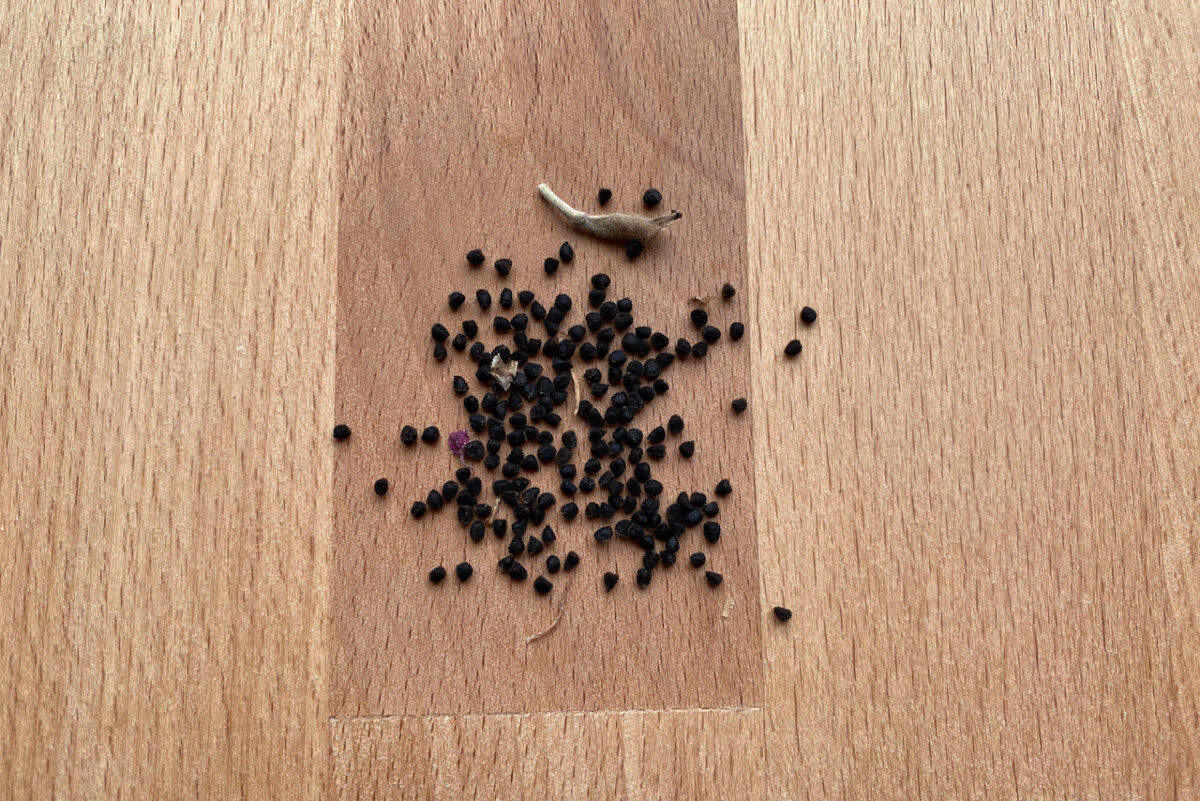
Larkspur seeds are easy to start, both indoors and straight in the garden.
The coneflower germ look like elegant little flapper skirts , do n’t they ? You should chill your seeds in the fridge before you institute them to better sprouting rates . you may plant echinacea about a quarter in mystifying . And just like with marigolds , if you ’re not certain which way is up , plant them flavourless . Seeds will germinate at about 65 - 70F ( 18 - 21C ) , so they do n’t call for any extra treatment other than keeping the territory moist .
14. Verbena (Verbena bonariensis)
Let ’s get one thing straight . The verbena I ’m growing in my garden is not what ’s commonly called verbena ( Verbena officinalis ) . I choose to farm the butterfly magnet that isVerbena bonariensis . Because I care the style it looks , always flowing a ripe couple of infantry above everything else , like a lifesaver surveying its domain from June until November .
One class , I allow it go to seed , but nothing happened . No new verbena baby cavort at the base of the mother plant ( or anywhere else in the garden , for that matter ) . So I decided to compile the seeds and take matter into my own bridge player .
The trick with verbena seeds is that they are full of chaff . And since I do n’t have a professional seed separate machine at home , I could n’t separate all of it . So I ’m found it with the chaff , which will just have to compost on its own in the ground .

I caught this bee coming in for landing on my larkspur.
The verbena seeds need darkness to germinate , so sprinkle a very light layer of seedling mix on top after you plant them . Germination is relatively dim and not very true , so check that you plant at least three or four seeds per prison cell . Keep the stain moist and you should see germination in about three week .
15. Sea holly (Eryngium)
To me , growing genus Eryngium from come is still a wonder . How can a plant that looks so out of this reality be grown from seed in my own living room ? Magic , probably !
Most popular eryngium miscellanea are biennial , but some may bloom during their first twelvemonth if you begin them up ( then pot them up ) too soon enough . That ’s why I pop them a honest two months before my last Robert Lee Frost , but not before stratifying them in the electric refrigerator for a duad of workweek .
The whoremonger with eryngium is that they have tap roots , so even when you pot up the sister seedling , you have to be very heedful not to damage the theme . That ’s why I only plant a couple in a pot . I know I ’m too clumsy to separate multiple seedling .

Valerian seeds
embed your genus Eryngium seeds flat and sparge a light layer of potting mix on top . Keep everything damp and at room temperature , and you ’ll see sprouts pop up in about three weeks . Eryngium baby are sensitive to freeze , so keep them indoors until the risk of frost has passed .
How I Start Flowers from Seed
When it comes to gardening , possibility without practice does n’t amount to much . So here ’s a shortsighted tutorial on how I bulge out my flowers from seeded player . If you already have a different method that mold for you , I suggest you stick to it . You have a go at it your own environs comfortably in terms of temperature , clean saturation and humidity .
Step 1: Choose a high-quality seed starting mix.
It may be tempting to schnorr up whatever you have around , such as compost or dirt from your garden . But for a high-pitched - character result , you need to set off with eminent - calibre ingredients .
Now I do it that the potting commixture is not technically “ soil , ” but bear with me when I refer to it as such anyway . It piddle it promiscuous to interpret for multitude who are new to this whole gardening business .
Some bagged pot medium is desirable for ejaculate starting , but not all of it . Always check the bag specifically for the “ seed starting ” symbol rather than just the “ suitable for pots ” one . Your source starting mix should be mostly inert , without too much fertilizer that could glow the seminal fluid .

Blooming valerian is a favorite with insects in my garden.
A good starting mix is also well - draining and well activate , so you ’ll often see perlite , vermiculite or coco coir in that . That go on the mix loose and open .
It ’s punishing to photograph well , but the intermixture that I ’m using has a mint of coco coir added . accord to the bag , the mix has thirty per centum “ dry matter . ”
Step 2: Get the soil evenly moist.
Whether you use a spraying garden hose , a bottle or a watering can , I found that it ’s significant to get the potting intermixture evenly moist before I place any seed in .
I ’m starting my seeds indoors , so I water the tray and pots using a bottle and allow the body of water to drain through the filth into the catchment tray below .
you could opt to employ or upcycle whatever pot you require . I ’ve used yogurt pots , plastic clam shells from fruit and newspaper pots . But the one affair that always made a conflict was whether the container had drainage golf hole or not . No drainage , no lot .

Lavender seeds are coated in wax.
Step 3: Make a slight indentation and plant your seed.
I use the point of a pencil to make one or more rut into the soil to imbed my seed . In this eccentric , I ’m planting larkspur , a source that need dark to germinate .
So after I plant it , I cover it up with a act of potting mix . If postulate , I befog the seed in place again .
But as you may have noticed , not all seeds will germinate in the dark . As a very general rule of quarter round , the smaller the seed , the more likely it is that it needs light to germinate .
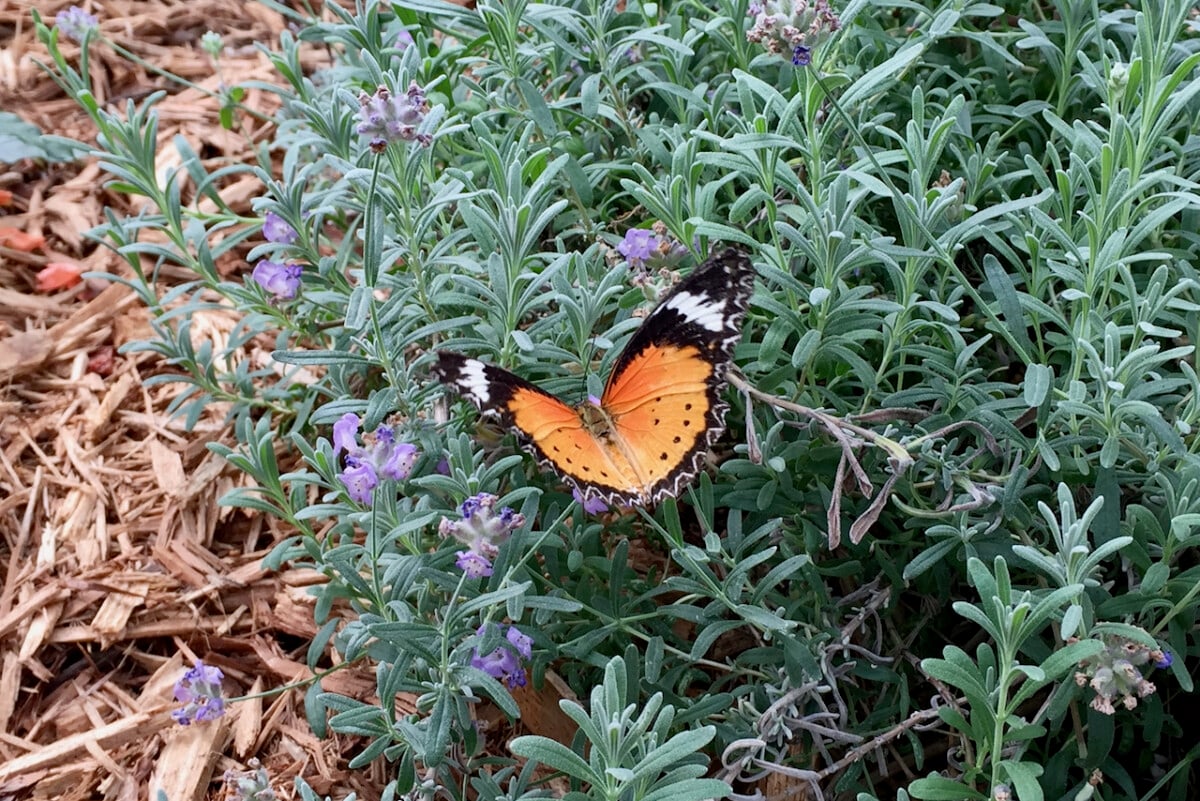
Blooming lavender will also attract plenty of pollinators.
This is not an downright truth , so always chequer the seed parcel or Uncle Google whether that ’s honest for the specific seeds you ’re planting .
Step 4: Label, label, label!
Do not rely on your memory here . Because when you have about fifty tummy of poop cluttering up every nook and cranny of your living ( and sometimes sleeping ) space , you wo n’t remember what you potted up and when .
I label every corporation or every tray with the name of the seed and the appointment I started it .
Step 5: Conserve moisture.
When you start seeds indoors , especially when hummer and radiator are still in use in late wintertime and former bound , the Earth’s surface of the soil will dry tight . And once the semen starts germinate then dries out , that ’s the end of its life . So it ’s a good idea to keep the soil evenly moist , either by using a cloche arrangement , a roll of clingstone film or any other cover that allows light to get through .
I have an indoor mini - glasshouse that ferment both as a hotness and moisture preserver . But until the greenhouse is in operation , a simple top cover will have to do .
cum starting is both a science and an graphics , in my ruling . And the more you practice the skill , the well you ’ll be at the art of germ bulge out .

Echinacea seeds also resemble a cone.

After growing white coneflower, I want to give the pink one a try.
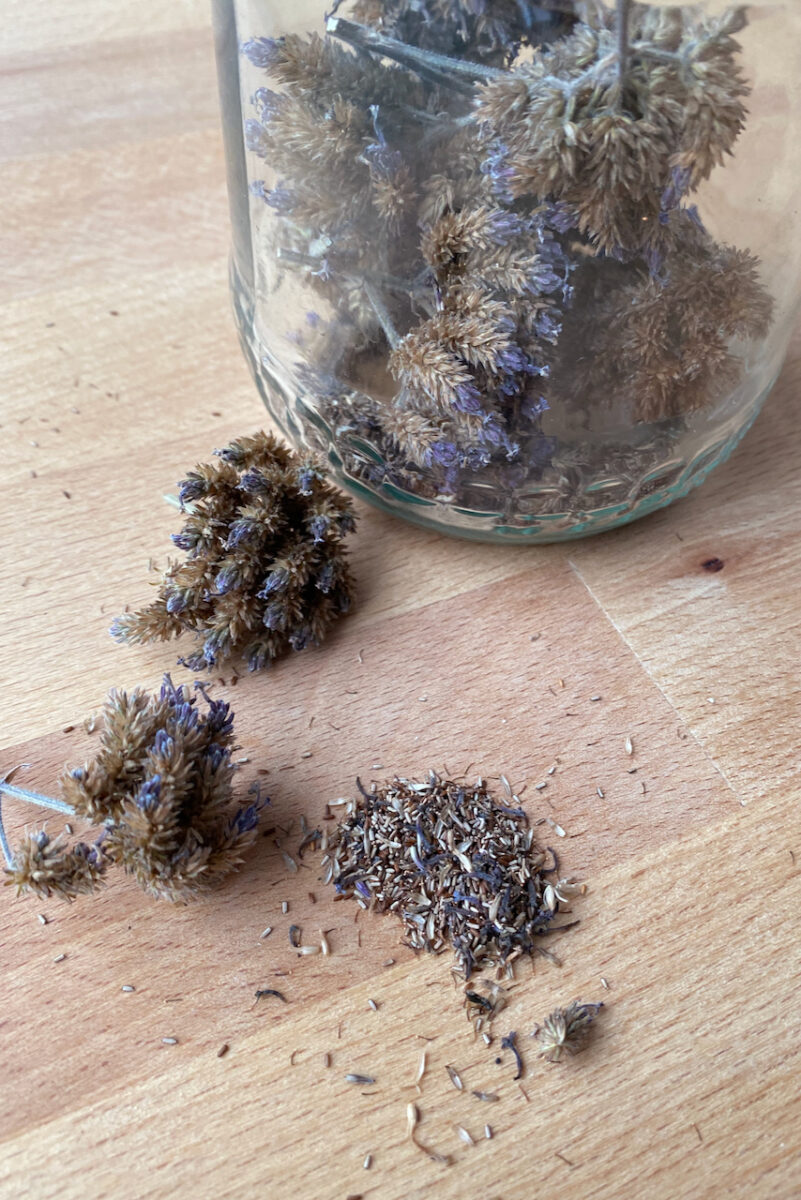
Verbena bonariensis seeds and chaff will be planted together.

Verbena bonariensis towers above any garden it’s in.

Even the seedheads of eryngium flowers look punk-rock.

Sea holly (Eryngium) looks out of this world.

Start with high-quality potting mix if you’re expecting good results.

The mix I’m using contains coco coir.

I’m starting seeds indoors, so it’s less messy to pot then water (than the other way around).

I use a pencil to make a small hole for the seeds.

Larkspur seeds will need darkness to germinate, so I’ll tuck them in once planted.

Don’t skip this step! Even if you’re in a hurry.

You have to conserve moisture and heat in the soil, at least until the seeds sprout.